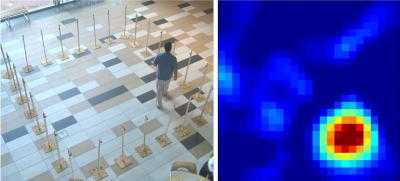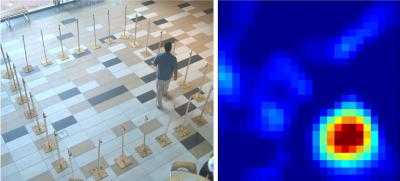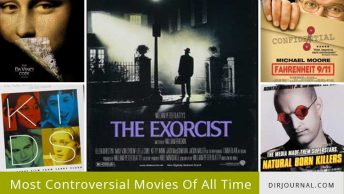
Ever wondered what’s going on behind closed doors? You may soon be able to satisfy your curiosity.
Engineers at University of Utah have been working hard on developing a device to track movements of people behind solid walls. Radio tomographic imaging is used to see and track moving objects or people in an area that is enclosed and surrounded by radio transceivers sending and receiving signals.
The study was conducted by Neal Patwari, an assistant professor and Joey Wilson a doctoral student in the Department of Electrical and Computer Engineering of the University of Utah.
In the first study, they placed a wireless network of inexpensive radio transceivers (nodes) around a portion of the atrium and in the lawn. The transceivers were placed on plastic pipe stands that are tall enough to take measurements at the human torso level. Radio signal strengths between the nodes were measured when a person walked in each area, and the data displayed on a computer screen. This displayed a blob-like image of the person.
In a second study, they used an improved method that allowed tracking through walls. It showed how variations in radio signal strength within a wireless network of 34 nodes made it possible to track moving people behind brick walls.
The method was first tested in Patwari’s home in Salt Lake City, with Wilson walking around inside the room. The changes in radio waves were measured and the system managed to track Wilson’s location.
The wireless system used for these studies was Zigbee network, which is the kind used by wireless home thermostats and other factory or home automation, and not the one used to link printers, home computers etc.
It is felt that this system could prove to be invaluable for the police, firefighters, hostage situations, elderly people, retail marketing as well as border control.
According to Neal Patwari and Joey Wilson, “By showing the locations of people within a building during hostage situations, fires or other emergencies, radio tomography can help law enforcement and emergency responders to know where they should focus their attention.”
How Radio Tomography Works
Radio tomographic imaging (RTI) is similar to a CT scan, and measures shadows in radio waves. It measures radio signal strengths on the different paths as the radio waves pass through the target or person. These measurements are used to create a computer image. The advantage of RTI is that radio frequency signals can travel through walls, trees and other obstructions. This imaging will work in the dark too, where video cameras cannot.
When asked if radio waves pose a risk, Wilson replied that the devices “transmit radio waves at powers 500 times less than a typical cell phone.” “And you don’t hold it against your head,” added Patwari.
The system is still in the initial stages and needs to be improved. According to Patwari, “The plan is that when there is a hostage situation, for example, or some kind of event that makes it dangerous for police or firefighters to enter a building, then instead of entering the building first, they would throw dozens of these radios around the building and immediately they would be able to see a computer image showing where people are moving inside the building. They are reusable and you can pick them up afterwards.”
Although, the technique may not be able to tell who the good guys and the bad guys are, at least in cases of emergencies, people can be located.
They talk about several possible situations where radio imaging can prove to be useful:
As a smart alarm system! If radios are placed into walls or plugged into outlets, people inside the house can be located. In case of an intrusion, not only is the security system triggered but the intruder inside the house can be tracked too.
Another usage could be in stores to identify where customers spend more time.
It may help elderly people living at home. With RTI, their movements at home can be tracked to see if they got up at the right time or not, if they went to the medicine cabinet or if they have not moved. This is the most unobtrusive way of keeping an eye on the elderly. If they happen to fall down the stairs or something else happens, that can be monitored.
As a wonderful inexpensive method of border security, where cameras don’t work in the dark or fog.
As an automatic control of heating, air conditioning and lighting in buildings. Radio tracking may even control sound systems so that the best sound is used when there are people around, as well as noise cancellation systems which can be aimed at noise sources automatically.
Since the studies have already been done and improvements being worked on, it may not be long before we start seeing through solid walls; especially as this is an inexpensive technology that may be within reach for the common man.













